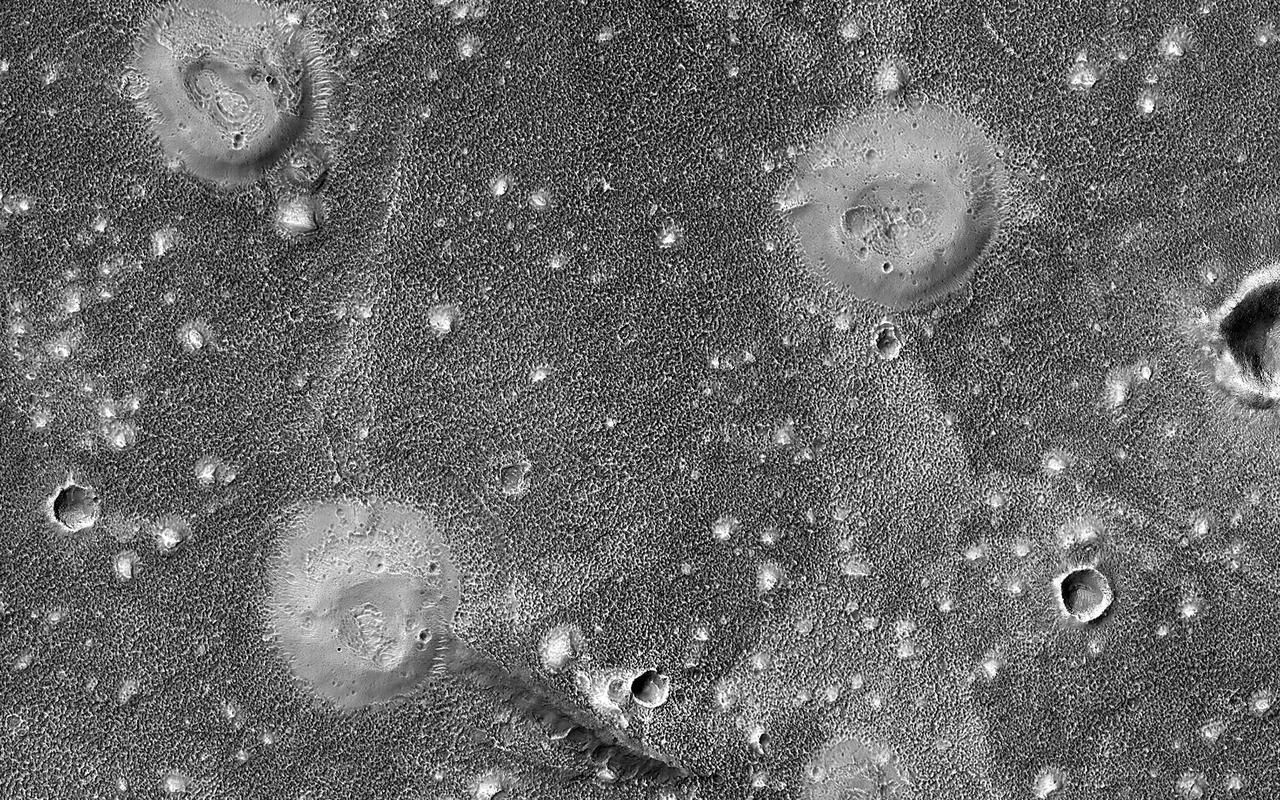
Cone shaped mounds were found around the northern hemisphere of Mars. Scientists believe these mounds are extinct mud volcanoes that could have spewed mud onto the surface that researchers can now use to study material from deep underground. The volcanoes may have been habitable to microbes, like microbial life found in mud volcanoes on Earth.
Credit: NASA/JPL-Caltech/University of Arizona
AGU News
Register for Ocean Sciences Meeting in Glasgow, 22-27 February 2026
Staff, freelance and student journalists, press officers and institutional writers are eligible to apply for complimentary press registration. Book conference hotels early! [media advisory][OSM26 Press][eligibility guidelines]
Featured Research
Martian mud volcanoes may have provided a habitable home for microbes
In the northern lowlands of Mars, there is evidence an ancient ocean once covered half of Mar’s northern hemisphere over 4 billion years ago. Along the perimeter are large cones that used to be flowing mud volcanoes. A new study discusses the possibility of a mud reservoir that existed under the volcanoes some 500-1800 meters underground. The volcanoes would spew mud into the air, throwing potential evidence onto the surface that may not have been accessible without drilling into Mars. The mud could have existed up to temperatures of 20 degrees Celsius supporting the presence of water and containing favorable conditions for microbial life. [JGR Planets study]
Will your street flood during flash flooding?
Flood predictions usually cover general areas, and can underestimate flood hazards, according to the researchers behind a new method, which provides street-by-street flood predictions using rainwater levels, storm patterns and historical data to look at flooding risks. The new maps are designed to help communities better plan for potential flash floods and show how floods would affect buildings and people on the ground. The mapping was applied to a city in China but could be adjusted for other cities in the future. [Water Research Resources study]
Creation and destruction of 12 young volcanic islands gives insight into the loss of rocky coasts
Volcanic islands can erode quickly, sometimes fast enough that researchers can watch them disappear back into the ocean in real time. This gives them a good research opportunity to see the process of erosion on non-volcanic rocky coasts, which erode at a slower rate. Researchers observed 12 historic volcanic islands and found erosion happens in waves. Quick initial erosion as the ocean erodes softer materials. The erosion then slows because only harder materials are left behind. The erosion creates large overhang cliffs that reinvigorate the coast when the overhangs break and crash down onto the coast. The type of rock the islands are made of determines how quickly the islands will erode. [JGR Earth Surface study]
As simple as possible: the importance of idealized climate models
As models that simulate Earth’s climate system become increasingly complex, the use of simpler and more flexible idealized models remains important for science and education. [Eos Editors’ highlights][AGU Advances commentary]